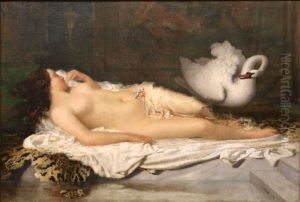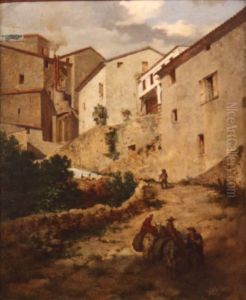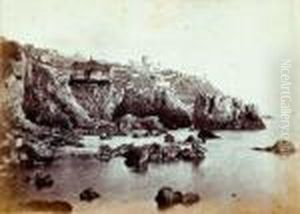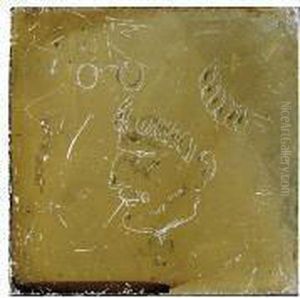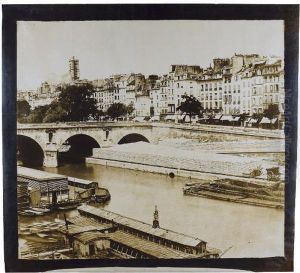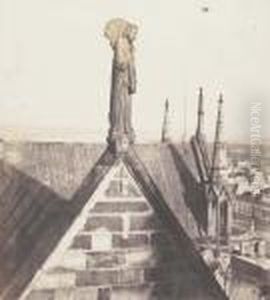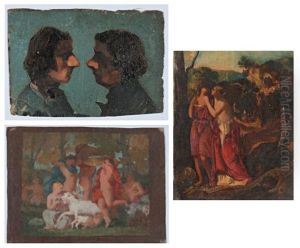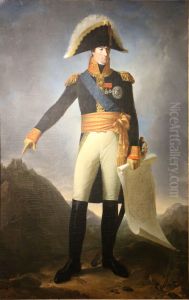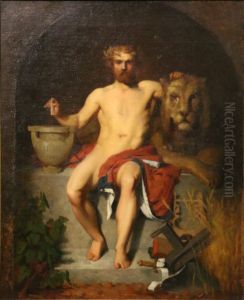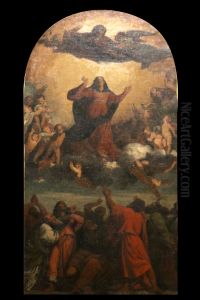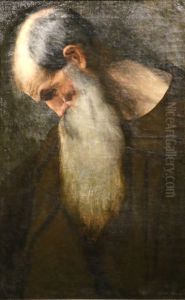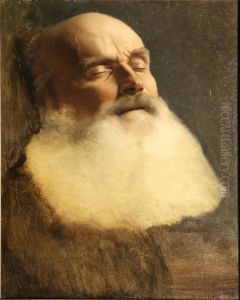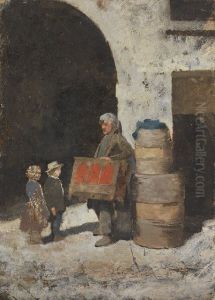Charles Negre Paintings
Charles Nègre was a pioneering French photographer, born on May 9, 1820, in Grasse, a commune in the Alpes-Maritimes department in southeastern France. He initially trained as a painter under Paul Delaroche and attended the École des Beaux-Arts in Paris, where he developed an interest in the nascent medium of photography. Nègre was passionate about the arts and was keen on exploring the potential of photography as a form of artistic expression.
Throughout the 1840s and 1850s, Nègre experimented with various photographic processes, including daguerreotypes, calotypes, and the waxed paper process. He was particularly interested in the ability of photography to capture the hustle and bustle of street life in Paris and other French cities. His most notable works from this period include 'Chimney Sweeps Walking', which is considered an early example of street photography.
In 1851, Nègre made a series of photographs of the Chartres Cathedral, using the then-revolutionary heliographic process. His technical skills were evident in his ability to capture the intricate details of the cathedral's architecture. He was also one of the first photographers to use the collodion process, which allowed for shorter exposure times and finer detail.
Nègre's contributions to the field of photography were not limited to his own artistic production. He also invented a photographic engraving process called 'heliogravure', which was a significant advancement in the reproduction of photographs in books and newspapers. Despite his innovations and the artistic quality of his work, Nègre struggled to gain the same level of recognition as some of his contemporaries during his lifetime.
Charles Nègre's impact on photography extends beyond his technical contributions. He was a visionary who saw the camera as a tool that could bridge the gap between art and reality. His work inspired future generations of photographers to explore the artistic possibilities of the medium. Today, Nègre is celebrated for his role in the development of photographic art, particularly his early recognition of the medium's potential for capturing the ephemeral moments of everyday life.
Sadly, Charles Nègre's efforts to gain widespread acclaim were largely unsuccessful during his lifetime, and he eventually turned away from photography to focus on painting and teaching. He died on January 16, 1880, in Sanremo, Italy. However, his legacy endures, and his photographs are now held in high regard for their historical value and artistic merit, residing in the collections of major institutions and museums around the world.
